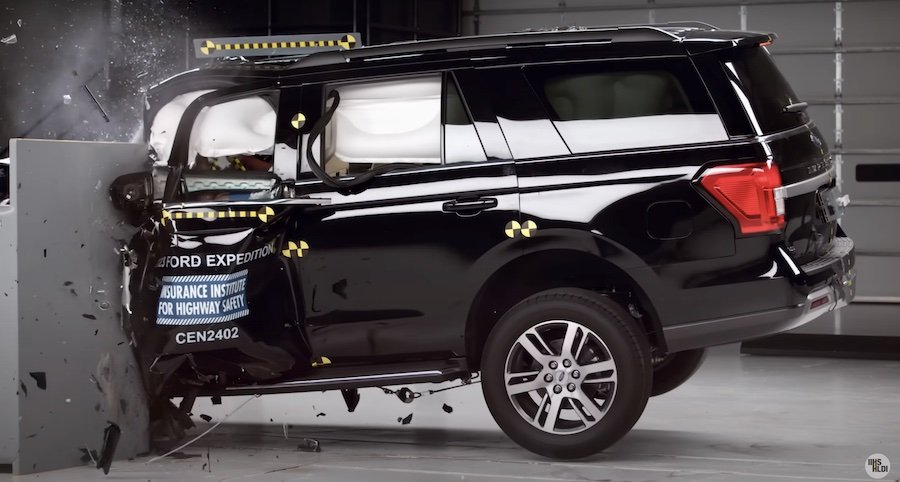IIHS crash tests 3 large SUVs, Jeep Wagoneer comes out on top

One of the most stubborn myths in the automotive world is that buying a large SUV will keep you safer. While it might be true that larger, heavier vehicles do more damage to others on the road, the Insurance Institute for Highway Safety’s latest findings show that not all large SUVs come with additional safety assurances.
The IIHS tested three large SUVs: The 2023-2024 Jeep Wagoneer, the 2023-2024 Chevrolet Tahoe, and the 2023-2024 Ford Expedition. The Wagoneer was the only of the three to earn a Top Safety Pick award, but it missed out on the “plus” designation due to failing to adequately protect rear-seat passengers.
IIHS President David Harkey said, “The huge mass of these large SUVs provides some additional protection in crashes with smaller vehicles, though that also means they present more danger to other road users. The flip side of their large size is that there is a lot more force to manage when they crash into a fixed obstacle like a tree or bridge abutment or the barrier we use in our front crash tests.”
The Chevy Tahoe did an “adequate” job at protecting the driver in the driver-side crash test, but the passenger-side test saw significant intrusion into the footwell, which created a high injury risk to the right foot and left leg. The Expedition fared worse in both tests, with its steering wheel partially detaching from the instrument panel during the driver-side test and footwell intrusion on the passenger side. Its A-pillar also detached from the rocker panel in both tests.
Because they’re so heavily used as family haulers, the IIHS placed an additional dummy in the second row. All three SUVs showed significant risks to second-row passengers, with high seatbelt forces presenting threats of chest injuries. The Expedition was the only one with second-row seatbelt pretensioners that help prevent excess passenger body movement, but its second-row side-curtain airbags failed to deploy.
Nouvelles connexes


